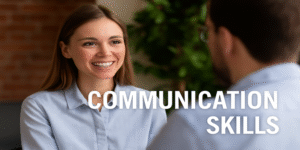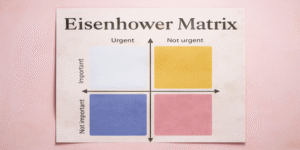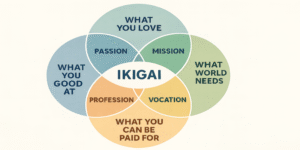A job interview is one of the most critical stages in the recruitment process. It allows employers to assess a candidate’s skills, qualifications, and personality, while providing candidates with the opportunity to demonstrate their fit with the organisation’s culture. Excelling in an interview requires a combination of preparation, confidence, and effective communication. Drawing from academic research, professional guidance, and expert insights, this article outlines practical strategies that can help candidates perform successfully in their next job interview.
1.0 Preparation: The Foundation of Success
Preparation forms the cornerstone of interview success. According to Levashina et al. (2014), candidates who prepare thoroughly are more confident, focused, and better able to communicate their suitability for the role. Preparation involves researching the company, understanding the role, anticipating questions, and reviewing one’s CV.
1.1 Research the Company
A well-informed candidate demonstrates genuine interest and initiative. Ehrhart, Mayer and Ziegert (2018) highlight the importance of aligning personal values with organisational culture. By exploring a company’s mission, values, and recent achievements, candidates can tailor their responses to reflect compatibility. For instance, if interviewing with a company known for sustainability, mentioning relevant environmental initiatives from past experience signals value alignment.
Research sources may include company websites, press releases, or annual reports. Understanding an organisation’s competitors and challenges also allows candidates to pose insightful questions that show strategic thinking.
1.2 Understand the Role
An in-depth understanding of the job description and required competencies is essential. Modern interviews often use competency-based or behavioural questions, which assess how candidates have handled past situations (Huffcutt et al., 2014). Reviewing the job description and identifying key skills—such as teamwork, problem-solving, or leadership—enables candidates to prepare specific examples demonstrating these abilities.
For example, a candidate applying for a managerial role might describe how they led a cross-functional team to achieve a project goal ahead of schedule.
1.3 Prepare for Common Questions
Some questions appear in nearly every interview. These include “Tell me about yourself” or “What are your strengths and weaknesses?” Robbins and Judge (2017) recommend preparing responses that are authentic, concise, and relevant rather than overly rehearsed. For instance, discussing a minor weakness—such as difficulty delegating—while explaining efforts to improve it, demonstrates self-awareness and growth orientation.
1.4 Know Your CV
Candidates should know their CV thoroughly and be ready to elaborate on key experiences. Bolton (2016) notes that interviewees often underperform because they forget specific examples of achievements. Reviewing one’s CV before the interview ensures clarity and consistency when discussing past roles, responsibilities, and results.
2.0 Communication: The Key to Connection
Strong communication—both verbal and non-verbal—is central to interview success. Mehrabian (1972) famously found that non-verbal cues can account for a significant portion of how messages are interpreted, making it crucial for candidates to manage both words and body language effectively.
2.1 Verbal Communication
Effective verbal communication requires clarity, structure, and relevance. Candidates should use the STAR method—Situation, Task, Action, Result—to answer behavioural questions in a focused, compelling way (Crosby, 2014). For example, in response to “Describe a time you managed conflict,” candidates can outline the situation, actions taken, and the outcome concisely. This method prevents rambling and highlights measurable achievements.
2.2 Non-Verbal Communication
Non-verbal communication reinforces verbal messages. Pease and Pease (2004) argue that posture, facial expressions, and gestures significantly affect interviewer perception. Maintaining eye contact, offering a firm handshake, and using open body language convey confidence and engagement. Smiling appropriately and nodding when listening also demonstrate attentiveness and positivity.
2.3 Active Listening
Active listening enables meaningful dialogue. Robbins and Judge (2017) note that active listeners build rapport by showing understanding and respect. Candidates can demonstrate attentiveness by paraphrasing key points or asking clarifying questions. This not only shows professionalism but also ensures the candidate fully understands the interviewer’s expectations.
3.0 Presenting Confidence and Professionalism
Confidence, when balanced with humility, can enhance a candidate’s credibility. Judge et al. (2009) found that interviewers often associate confidence with competence, provided it does not cross into arrogance.
3.1 Dress Appropriately
First impressions begin before the interview starts. Barrick and Mount (1991) found that appearance influences perceived professionalism and suitability. While expectations vary across industries, candidates should dress slightly more formally than the company standard unless instructed otherwise. For instance, corporate roles may call for business attire, whereas creative industries might allow smart casual clothing.
3.2 Manage Anxiety
It is natural to feel nervous before an interview, but anxiety can hinder performance if unmanaged. McCarthy and Goffin (2004) recommend breathing exercises, mindfulness, and positive self-talk to reduce stress. Engaging in mock interviews with mentors or peers can also build confidence and familiarity with the interview format.
3.3 Show Enthusiasm
Genuine enthusiasm demonstrates motivation and interest. Hargie (2016) explains that candidates who express passion through tone of voice and body language are more memorable to interviewers. Asking thoughtful questions about company initiatives, culture, or growth opportunities reinforces commitment to the role.
4.0 Answering Questions Effectively
The ability to respond thoughtfully and concisely to questions distinguishes exceptional candidates from average ones.
4.1 Use the STAR Method
The STAR method remains the gold standard for behavioural interviews (Huffcutt et al., 2014). For instance, when asked, “Describe a time you overcame a challenge,” a candidate might discuss a project setback (Situation), outline their responsibility (Task), explain specific actions taken (Action), and conclude with measurable outcomes (Result). This approach provides structure, clarity, and evidence of competence.
4.2 Discuss Strengths and Weaknesses Wisely
When addressing strengths, candidates should highlight attributes most relevant to the role. For weaknesses, it is best to discuss areas of development alongside evidence of progress (Robbins & Judge, 2017). For example, a candidate might acknowledge struggling with time management in the past but explain how using digital planning tools improved productivity.
4.3 Ask Thoughtful Questions
Interviews typically end with the opportunity to ask questions. Krajewski et al. (2006) found that candidates who ask insightful questions appear more engaged and strategic. Examples include asking about team dynamics, future projects, or career development pathways. Avoiding salary or benefits questions at this stage keeps the focus on value and fit.
5.0 Following Up Professionally
The interview does not conclude when the candidate leaves the room. A well-timed thank-you email reinforces professionalism and interest. Doyle (2021) suggests sending a short, personalised message within 24 hours, expressing appreciation for the opportunity and reiterating enthusiasm for the role. This small gesture helps candidates remain memorable during the decision-making process.
Excelling in a job interview requires more than good qualifications—it demands preparation, communication, and professionalism. Candidates who research the company, practise the STAR method, and engage in active listening convey competence and confidence. Presenting enthusiasm, adaptability, and authenticity allows candidates to stand out in competitive job markets. Furthermore, maintaining composure under pressure and following up appropriately can transform a strong interview into a successful job offer. By applying these principles, candidates can not only improve their performance but also position themselves as individuals who embody both capability and character—the hallmark of interview excellence.
References
Barrick, M. R. and Mount, M. K. (1991) ‘The Big Five Personality Dimensions and Job Performance: A Meta-Analysis’, Personnel Psychology, 44(1), pp. 1–26.
Bolton, R. (2016) People Skills: How to Assert Yourself, Listen to Others, and Resolve Conflicts. New York: Simon & Schuster.
Crosby, P. (2014) ‘The STAR Technique Explained: How to Excel in Competency-Based Interviews’, Guardian Jobs. [Online]. Available at: https://www.theguardian.com/careers/competency-based-interview-questions (Accessed: 28 September 2024).
Doyle, A. (2021) ‘Tips for Sending a Thank-You Note After Your Interview’, The Balance Careers. [Online]. Available at: https://www.thebalancecareers.com/thank-you-email-after-interview-2063576 (Accessed: 28 September 2024).
Ehrhart, K. H., Mayer, D. M. and Ziegert, J. C. (2018) ‘Web-Based Recruiting: A Review of Research and Directions for Future Research’, Human Resource Management Review, 28(1), pp. 1–14.
Hargie, O. (2016) Skilled Interpersonal Communication: Research, Theory, and Practice. 6th edn. London: Routledge.
Huffcutt, A. I., Conway, J. M., Roth, P. L. and Stone, N. J. (2014) ‘Identification and Meta-Analytic Assessment of Psychological Constructs Measured in Employment Interviews’, Journal of Applied Psychology, 86(5), pp. 897–913.
Judge, T. A., Erez, A., Bono, J. E. and Thoresen, C. J. (2009) ‘The Core Self-Evaluations Scale: Development of a Measure’, Personnel Psychology, 56(2), pp. 303–331.
Krajewski, H., Goffin, R. D., McCarthy, J. M. and Rothstein, M. G. (2006) ‘Why Do We Ask Questions Anyway? The Functions of Job Interview Questions’, International Journal of Selection and Assessment, 14(2), pp. 174–188.
Levashina, J., Hartwell, C. J., Morgeson, F. P. and Campion, M. A. (2014) ‘The Structured Employment Interview: Narrative and Quantitative Review of the Research Literature’, Personnel Psychology, 67(1), pp. 241–293.
McCarthy, J. M. and Goffin, R. D. (2004) ‘Predicting Job Performance Across Five European Countries: The Contribution of Cognitive Ability and Personality’, European Journal of Work and Organisational Psychology, 13(3), pp. 287–304.
Mehrabian, A. (1972) Nonverbal Communication. Chicago: Aldine-Atherton.
Pease, A. and Pease, B. (2004) The Definitive Book of Body Language. London: Orion.
Robbins, S. P. and Judge, T. A. (2017) Organisational Behaviour. 18th edn. London: Pearson.









